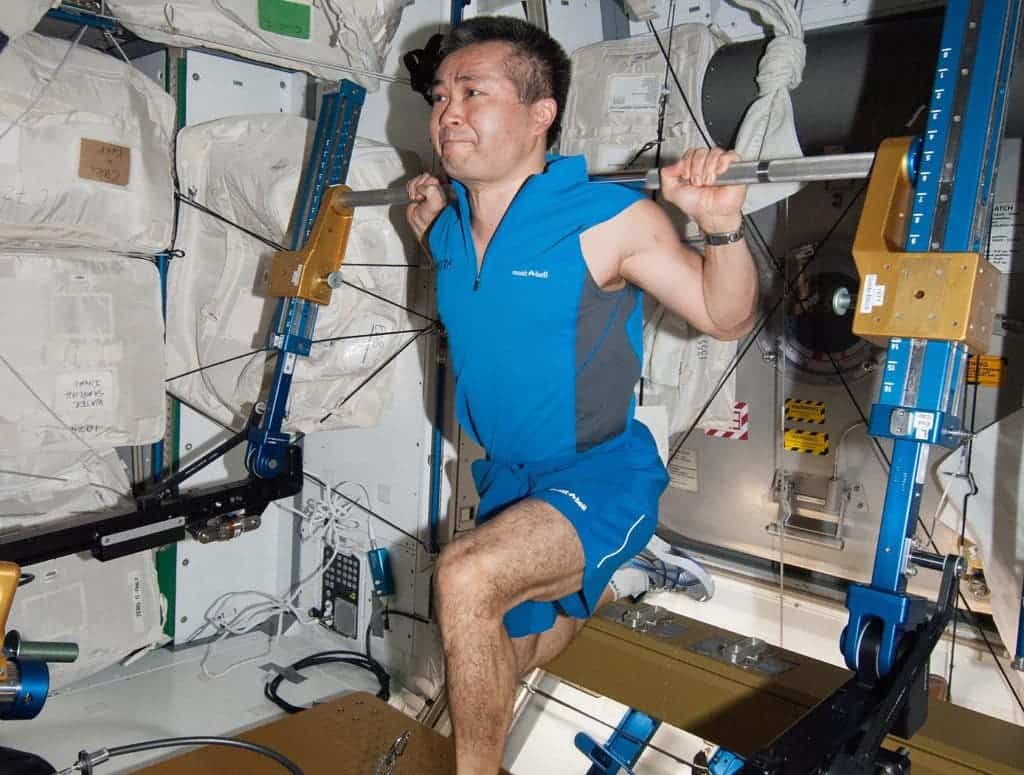Astronauts living aboard the International Space Station may experience bone and muscle loss due to the combined effects of microgravity and radiation, scientists report. The findings have important implications for how NASA engineers plan on mitigating the effects of radiation for upcoming deep-space missions such as a manned trip to Mars.
Like muscles, bone is a dynamic tissue which adapts to demand. If there’s frequently increased load, bones will grow bigger to meet this demand. In a weightless environment, however, muscles will atrophy and bones will lose density. What’s more, radiation also seems to play a role in bone density loss but not in muscle atrophy, a recent study funded by NASA informs.
Researchers led by Henry Donahue from Virginia Commonwealth University studied mice whose movements were restricted, thereby simulating microgravity. Another group of mice were left to roam freely while being exposed to radiation of the kind experienced in space.
While the microgravity conditions led to both muscle and bone loss, radiation alone could only produce bone loss.
“Radiation plus microgravity amplifies the negative effect of microgravity on bone, but does not affect muscle loss,” Donahue said in a statement. “It’s as if exposure to radiation itself doesn’t affect bone, but it makes it more sensitive to the negative effects of microgravity.”
Donahue says that loss of bone and muscle experienced by astronauts is similar to what doctors see in aging people. Older people, he said, “fall more, they break their bones more.” In the future, understanding how microgravity impacts human biology might reveal important insight regarding the effects aging has on muscle and bone.
Sadly, this is more bad news for manned space flight. Previously, scientists at the University of California, Irvine, found mice exposed to space radiation experienced cognitive decline, accompanied by changes in the structure and integrity of brain nerve cells and the synapses.
Charles Limoli, a scientist at the University of California, Irvine, previously found similar kinds of brain damage in cancer patients who had received high-dose, photon-based radiation treatments. The oncologist says that astronauts would require months and months worth of exposure to deep space radiation for brain damage to occur. Considering the shortest one-way trip to Mars lasts 260 days, that’s cause for worry.
“Exposure to these particles can lead to a range of potential central nervous system complications that can occur during and persist long after actual space travel – such as various performance decrements, memory deficits, anxiety, depression and impaired decision-making,” said Limoli.
No escaping radiation
Now, we know that radiation will also incur an additional bone loss in astronauts. Deep space radiation is an unsolved problem, as no amount of shielding can block off highly energetic space rays from penetrating a spaceship.
The effects of weightlessness are also problematic. Besides incurring significant muscle and bone loss after only a couple of weeks spent in space, microgravity also impairs vision by literally deforming the eyeball. Other, more subtle effects, include genes that turn on and off (with unclear consequences at this point) and longer telomeres (which slow down chromosome deterioration).
To counter the bone and muscle loss, since 2008, astronauts aboard the ISS have been using the Advanced Resistive Exercise Device (ARED), which allows them to simulate free-weight exercises in normal gravity. Each astronaut has an allocated exercise time of two hours a day in space. But despite exercise, it still takes months of rehabilitation to adjust when returning to Earth after a typical six-month space mission.
Scientific reference: Andrew R. Krause et al. Simulated space radiation sensitizes bone but not muscle to the catabolic effects of mechanical unloading, PLOS ONE (2017). DOI: 10.1371/journal.pone.0182403.











